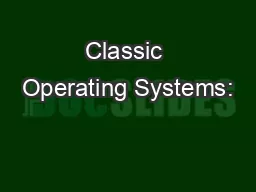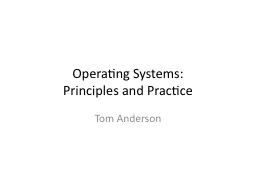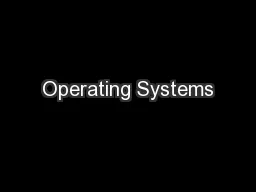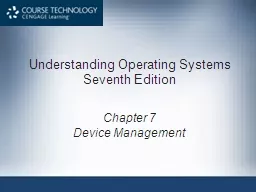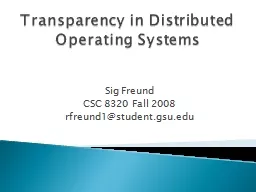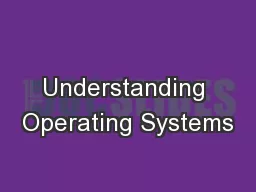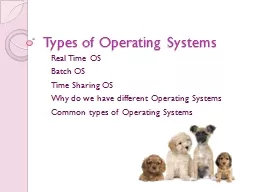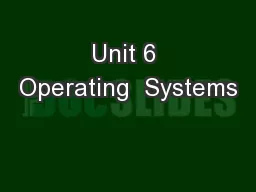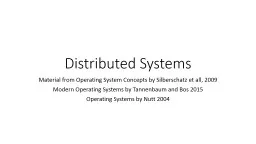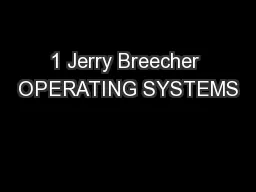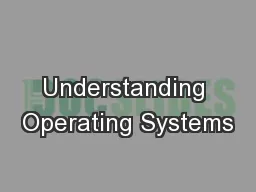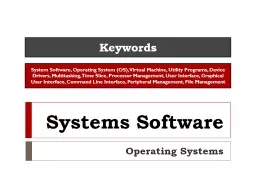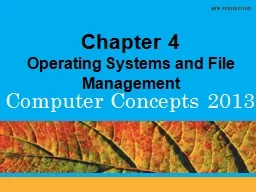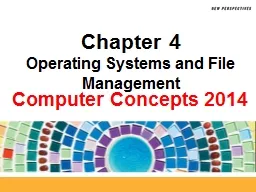PPT-Classic Operating Systems:
Author : alexa-scheidler | Published Date : 2016-05-12
Unix and Mach Ken Birman CS6410 1 Unifying question for today What should be the central design principle of a modern operating system Unix now called Linux Elegant
Presentation Embed Code
Download Presentation
Download Presentation The PPT/PDF document "Classic Operating Systems:" is the property of its rightful owner. Permission is granted to download and print the materials on this website for personal, non-commercial use only, and to display it on your personal computer provided you do not modify the materials and that you retain all copyright notices contained in the materials. By downloading content from our website, you accept the terms of this agreement.
Classic Operating Systems:: Transcript
Download Rules Of Document
"Classic Operating Systems:"The content belongs to its owner. You may download and print it for personal use, without modification, and keep all copyright notices. By downloading, you agree to these terms.
Related Documents

